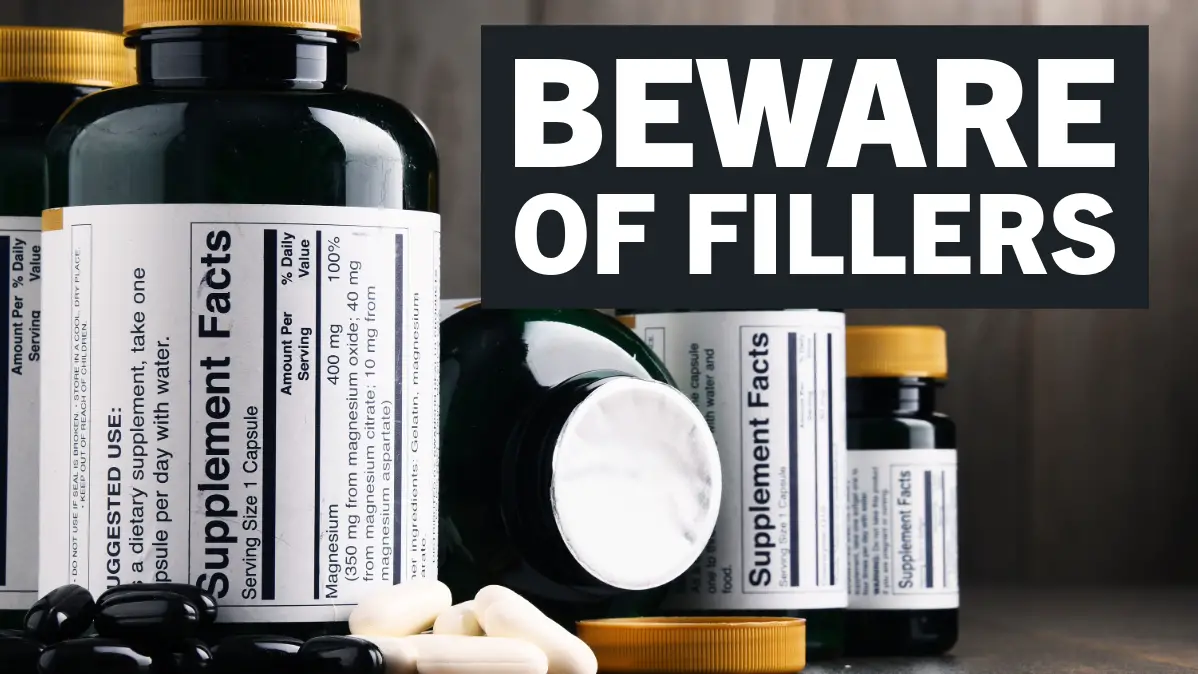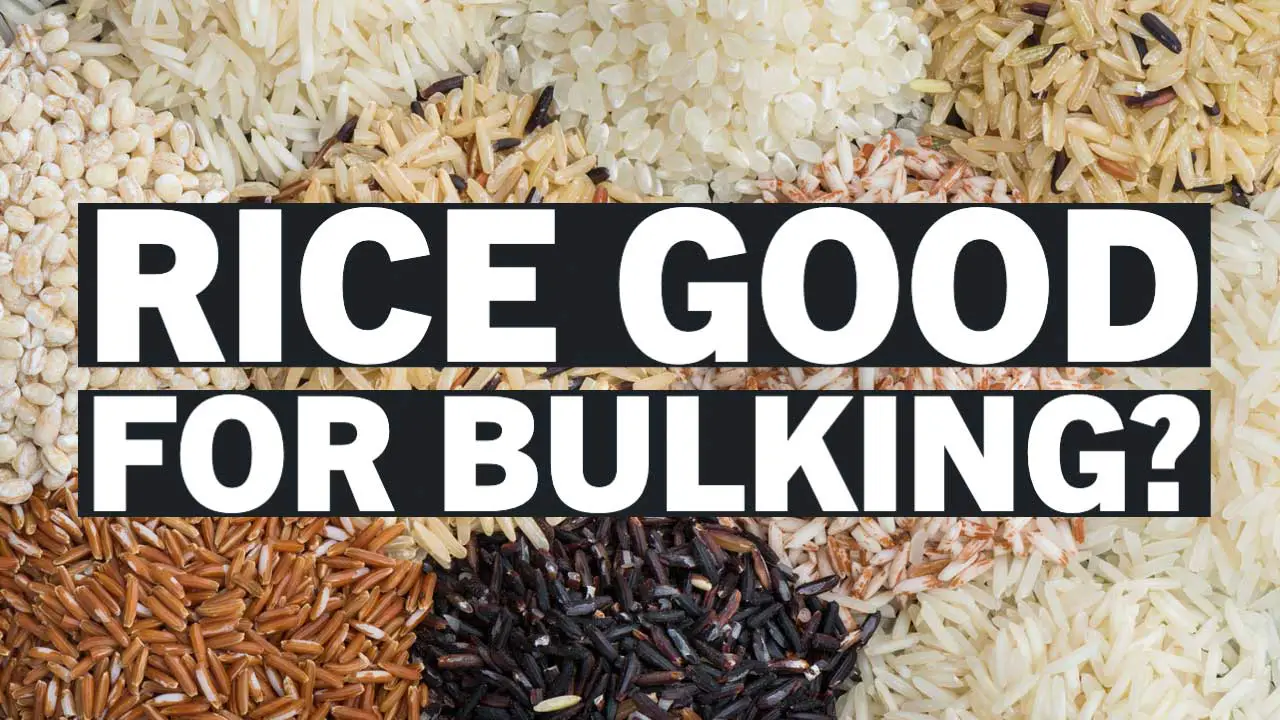Dirty Bulk vs Clean Bulk: The Ultimate Guide for Gains

ListedFit is reader-supported. When you buy through links on our site, we may earn a small commission.
When it comes to gaining muscle mass, you might have heard about two popular approaches: dirty bulking and clean bulking.
Understanding the difference between these two methods can help you make an informed decision that aligns with your goals and nutritional preferences.
Dirty bulking is a more non-restrictive approach that involves consuming a high number of calories, without paying much attention to the quality of the food. This often includes eating junk food and indulging in treats.
On the other hand, clean bulking is a more disciplined approach that focuses on obtaining those extra calories from healthier, minimally processed foods.
The goal here is to gain muscle mass without excess fat.
Now that you’re aware of these two techniques, it’s time to dive deeper into the differences and figure out which one is right for you.
Key Takeaways
- Dirty and clean bulking are the two primary methods of gaining muscle mass.
- Clean bulking focuses on consuming extra calories from healthy, minimally processed foods.
- Choosing between the two methods depends on your personal goals and nutritional preferences.
In This Article…
The Basics of Clean Bulk 🥦🌽🍠
Nutrition in Clean Bulk
When you’re clean bulking, your primary goal is to consume nutrient-dense foods that provide the essential macronutrients – proteins, healthy fats, and complex carbohydrates. It’s important to focus on maintaining a caloric surplus while keeping your calorie intake in check to ensure healthy weight gain and minimise fat gain.
In your clean bulk diet, try and include a variety of whole foods and lean proteins, such as chicken, fish, and low-fat dairy. Whole grains, legumes, and fruits and vegetables should be part of your balanced meal plan for complex carbohydrates, minerals, and fibre. Healthy fats like avocado, nuts, and olive oil, can provide energy and aid in crucial body functions.
When planning your meals, track your macronutrient intake and aim for a high-protein diet. This will support muscle growth and repair after training sessions. Don’t forget to stay hydrated and consider supplements, such as protein powder or multivitamins, to ensure you’re getting all the nutrients you need.
Training and Recovery in Clean Bulk
As important as nutrition, your training and recovery should be equally prioritised in your clean bulking journey. Incorporate weightlifting and resistance exercises that target major muscle groups for optimal mass gains. It’s essential to progressively increase your weights and intensity to continuously challenge your muscles and stimulate growth.
Remember that recovery is a crucial aspect of clean bulking. Make sure you’re giving your body enough rest between training sessions and getting adequate sleep. Stretching, foam rolling, and even yoga can help improve flexibility and prevent injury.
Clean bulking revolves more around mindful meal planning, effective training, and sufficient recovery. Clean bulking does take longer, but the results are better.
The Basics of Dirty Bulk 🌭🍔🍟
When it comes to bulking, the dirty bulk approach is all about consuming a large number of calories to gain weight as quickly as possible. This section will break down the nutritional aspects of dirty bulking and how it affects training and recovery.
Nutrition in Dirty Bulk
In a dirty bulk, you focus on consuming high-calorie, often unhealthy foods to achieve a calorie-dense diet. These foods typically include junk food, fast food, and heavily processed options, which can quickly lead to a significant caloric surplus. Your daily caloric intake will likely be far above what you’d normally consume, and you might not be tracking your macros as closely as you would for a clean bulk.
Although dirty bulking is easier, the chances of you getting enough nutrients throughout your day are reduced significantly…
The main goal of dirty bulking is to gain mass quickly, achieved by eating an abundance of energy-dense carbohydrates and proteins.
Macros can sometimes take a back seat to overall calorie intake in dirty bulking, with a higher focus on consuming calorie-dense foods. This diet approach can be cheaper and easier to follow, as it allows for greater flexibility in food choices.
Here’s a rough idea of what a dirty bulking meal plan might look like:
- Breakfast: Bacon, eggs, hash browns, and toast with butter
- Lunch: Double cheeseburger, large fries, and soft drinks
- Snack: Chocolate bars or crisps
- Dinner: Fried chicken, pizza, or a big bowl of pasta with creamy sauce
Training and Recovery in Dirty Bulk
When following a dirty bulk, your training sessions should be centred around compound lifts and exercises that target large muscle groups. This can help with promoting muscle growth and strength increases. However, the focus on high-calorie intake can lead to excess fat gain, which may affect overall progress and potentially hinder your athletic performance.
The extra calories you consume during a dirty bulk may give you an energy boost, allowing you to train more intensely and potentially recover faster between workouts. On the flip side, this calorie overconsumption lends itself to weight gain from unwanted fat, which can hide your muscle definition and negatively impact your overall body composition.
While dirty bulking can be more cost-effective and flexible, there are potential downsides, such as an increased risk of fat gain and overall lower-quality nutrition.
Comparison: Dirty Bulk vs Clean Bulk 👍👎

Pros and Cons of Clean Bulk
Clean bulking focuses on healthy food choices and tries to minimise fat gain. This approach has numerous benefits for your overall health, physique, and bodybuilding goals.
Pros of Clean Bulking
- Healthier food choices: By preferring organic, local, and whole foods when possible, you’re providing your body with the necessary nutrients and micronutrients for optimal progress and recovery.
- Controlled macronutrient intake: Tracking your macros helps to closely monitor calorie consumption, ensuring that you’re eating enough to promote muscle growth without gaining excessive body fat.
- Better overall nutrition: By focusing on nutrient-dense foods, you’re likely to experience improved general health and well-being.
Cons of Clean Bulking
However, clean bulking also has a few downsides:
- Less convenient: Planning and preparing meals with healthier food choices can be more challenging and time-consuming.
- Slower muscle growth potential: As clean bulking usually involves a more gradual increase in calorie intake, it may lead to slower muscle growth compared to dirty bulking.

Pros and Cons of Dirty Bulk
Pros of Dirty Bulking
Dirty bulking is characterised mainly by a focus on the number of calories consumed, typically disregarding the quality of the foods. Here are some benefits of dirty bulking:
- Faster muscle growth: Due to the higher calorie intake, muscle mass may be achieved more quickly on a dirty bulk diet.
- More convenient: For those with busy schedules, it’s easier to obtain high-calorie, high-protein meals from fast food or processed options.
Cons of Dirty Bulking
However, dirty bulking has its downsides:
- Higher body fat levels: With less controlled macronutrient intake, you’re likely to gain more body fat, which may affect your physique and make the cutting phase more challenging.
- Potential health risks: A diet consisting of processed and unhealthy foods can increase the risk of issues such as heart disease and high cholesterol, impacting your overall health.
- Sustainability: This approach might not be suitable for competitive bodybuilders or beginners looking for a balanced, long-term approach.
Work Out How Many Calories You Need to Bulk – TDEE Calculator
Which Should You Do: Dirty Bulk or Clean Bulk?
As you embark on your muscle-building journey, you’ll likely come across two popular approaches: dirty bulking and clean bulking. But which one should you choose? Let’s break down the key differences between these two methods to help you decide on the best path for your fitness goals.
Dirty bulking is a more relaxed approach to muscle gain, where you eat as many calories as possible, regardless of the food quality.
Dirty bulking can and does lead to unwanted fat accumulation…
Examples of what can go wrong with dirty bulking include excessive fat gain, health issues from consuming too much unhealthy food, and an imbalanced macronutrient intake.
On the other hand, clean bulking focuses on increasing muscle mass while keeping body fat to a minimum, by consuming quality whole foods like lean proteins, complex carbohydrates, and healthy fats. This method requires more discipline and careful tracking of your macronutrient intake, ensuring you get the right balance of nutrients to fuel your muscle growth.
If you prefer a more structured approach and are willing to put in the effort to track your macronutrients and stick to a wholesome diet, clean bulking could be your best bet.
Clean bulking might take a little longer to see results, but it’s generally considered healthier and more sustainable over the long term.
Frequently Asked Questions
What are the main differences between dirty and clean bulking?
Dirty bulking is a method where you consume a large number of calories from any food source, typically including unhealthy and processed foods, without closely tracking your macronutrients.
On the other hand, clean bulking focuses on consuming healthy food choices, such as organic, local, and whole foods, whilst closely tracking your macronutrients to minimize fat gain.
How does the duration of bulking differ between dirty and clean methods?
The duration of bulking can vary depending on your goals and the method you choose. Dirty bulking can result in faster muscle gain due to the higher calorie intake but may also lead to an increase in body fat.
A clean bulk may take longer because you’re consuming fewer calories and focusing on quality food sources, ensuring a more controlled, steady muscle gain with minimal fat.
What are some recommended foods for a clean bulk?
For a clean bulk, focus on whole, nutrient-dense foods. Some examples include lean protein sources like chicken, turkey, and fish; complex carbohydrates such as quinoa, brown rice, and sweet potatoes; healthy fats from avocados, nuts, and seeds; and plenty of vegetables and fruits for vitamins, minerals, and fibre.
Does dirty bulking work quicker than clean bulking?
Yes, dirty bulking can work quicker than clean bulking due to the higher calorie intake and less focus on the food source quality.
However, this quickness often comes at the cost of increased body fat, which may not be ideal for all individuals.
What are the benefits and downsides of dirty bulking for skinny people?
For skinny individuals, dirty bulking can provide quicker muscle gain, which could be motivating and boost self-confidence.
However, the downsides can include increased body fat, potential health issues from consuming unhealthy foods, and the need for a more challenging cutting phase to remove the excess fat gained during the dirty bulk.
How can I determine the right calories intake for a clean bulk?
To determine the right calorie intake for a clean bulk, start by calculating your total daily energy expenditure (TDEE) – the number of calories needed to maintain your current weight.
Add a moderate calorie surplus (typically around 250-500 calories) to promote muscle growth without excessive fat gain. Ensure your macronutrients (protein, fat, and carbohydrates) are balanced and adjust as necessary based on your results and progress.
Author
- Danny Loeb is a qualified Personal Trainer, Fitness Model and Writer. He enjoys blogging about health and fitness, messing around with Photoshop, and sharing his experiences with everyone.
Latest entries
 NutritionFebruary 6, 2024What Are Fillers in Supplements? – Unveiling Inactive Ingredients
NutritionFebruary 6, 2024What Are Fillers in Supplements? – Unveiling Inactive Ingredients FitnessAugust 23, 2023Best Post-Workout Foods: Great Ideas for Recovery and Results
FitnessAugust 23, 2023Best Post-Workout Foods: Great Ideas for Recovery and Results BulkingJuly 26, 2023Is Rice Good for Bulking? Unveiling the Truth
BulkingJuly 26, 2023Is Rice Good for Bulking? Unveiling the Truth CultureJuly 15, 2023Why Do People Hate Planet Fitness? Read This Before You Join!
CultureJuly 15, 2023Why Do People Hate Planet Fitness? Read This Before You Join!
Affiliates:
This post may contain affiliate links that at no additional cost to you, the site may earn a small commission. We only recommend products we would use ourselves and all opinions expressed on this site are our own.
General Advice:
The information provided in this article is for general informational purposes only. It is not intended as a substitute for professional advice. Always consult with a qualified healthcare professional before starting any new diet, exercise program, or making changes to your health routine.
Accuracy Advice:
While we strive to provide up-to-date and accurate information, the content in this article may not reflect the most current research or medical guidelines. We encourage readers to do further research and consult with professionals for more personalized advice.
Our Recommendations:
The products and services mentioned in any of our articles are recommended based on our independent research and personal experience. We are not sponsored by any company. We aim to suggest products and services we believe are of high quality and could be beneficial to our readers.






